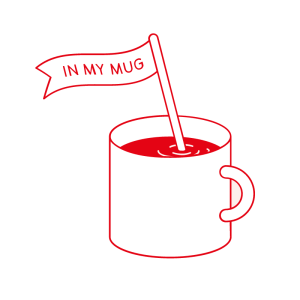
Due to a multiple hard disk drive failure, the original recording for this episode we sadly lost : ( however all was not lost! Steve and our friends at Tentacle Media worked over the weekend to record and edit a new recording and so without further ado, here we go!
I first discovered El Limon on my trip to Guatemala in early 2013. At the time we'd never bought coffee directly from Guatemala, but since then this has become one of our strongest and most amazing Hasrelationships.
My friend Raul (whom you may remember as the World Barista Champion of 2012!) in Guatemala had been buying coffee from these guys for a couple of years, and he was very keen for me to go and meet them. Located around an hour's drive to the east of Guatemala City in the small town of Palencia, this farm sits at an altitude between 1,600 and 1,800 metres above sea level. It's owned by Guadalupe Alberto Reyes, who's also just known as Beto. He used to be the Mayor of Palencia, and he helped to build and develop the town.
Palencia is not part of the eight regions of coffee as defined by Anacafé, but you can see a lot of development in the zone, and this farm is a perfect example of that development. I like being in places that are working to be hot and up-and-coming, as well as those that are established players.
One of the main reasons I love El Limon is Beto's desire to experiment; the farm mostly produces Bourbon and Caturra, but he also plays around with a few other varietals. The experimentation is thanks to Beto's motivation; he has really focused on the farm over the last few years. He wanted to take more care in every step they take – from picking to processing, to shipping – and also take more care in the agronomy of the farm.
This is very much a family affair: his wife and son also work on the farm, along with Beto's siblings. In fact, his son is studying agronomy at the local college for the benefit of the farm.
The dedication and care devoted to each step of production is reflected in the fact that the family has built a new wet mill, so that they can separate different lots and have control over the quality of the coffee. Previously the mill could process only one lot; now the farmers are able to process many lots, and keep separate days' pickings and varietals in their own parcels.
With this wet mill came another opportunity, which was for neighbours and people within the region of Palencia to bring their coffees to the mill where they could get them processed. It's another sign that this is a hot spot for Guatemalan coffee.
As time moves on, Beto doesn't want to stand still and is continuing to invest in the farm. He showed me lots of new planting during my recent visit, and a lot of building work around the wet mill. He is also building a QC lab and new accommodation for people working on the farm. It was a real hive of activity.
Beto and his family have always been the perfect hosts whenever I visited the farm. They are such welcoming people and take great pride in showing me around their farm. One of the kindest things they've done for me is to welcome me into their home when I am visiting, and they always prepare the most amazing meals! When you travel as much as I do, mid-trip you find yourself longing for something big, home-cooked, and not from a restaurant or roadside pop-up cafe. Traditional Guatemalan meals are just the ticket, and I always look forward to the food – but mainly I look forward to the company.
The Milky Bars are on me! Yep, it's a creamy, chocolatey cup that makes for great chugging coffee. There's a delicate acidity that reminds me of pear, and there's a little almond on the finish too.
- Country: Guatemala
- Region: Palencia
- Farm: El Limon
- Farmer: Guadalupe Alberto 'Beto' Reyes
- Altitude: 1,600 m.a.s.l.
- Varietal: San Ramon
- Processing method: Washed
Clean cup: (1–8): 6
Sweetness: (1–8): 7
Acidity: (1–8): 6
Mouthfeel: (1–8): 6
Flavour: (1–8): 6.5
Aftertaste: (1–8): 6
Balance: (1–8): 6.5
Overall: (1–8): 6.5
Correction: (+36): +36
Total: (max. 100): 86.5
Roasting Information
Medium-dark – through first, keeping a nice steady pace and looking for those first pops of second as you drop the coffee into the cooling tray.
More Episodes
 2021-06-05
2021-06-05
 2021-05-29
2021-05-29
 2021-05-15
2021-05-15
 2021-05-08
2021-05-08
 2021-05-01
2021-05-01
 2021-04-17
2021-04-17
 2021-04-10
2021-04-10
 2021-03-27
2021-03-27
 2021-02-06
2021-02-06
Create your
podcast in
minutes
- Full-featured podcast site
- Unlimited storage and bandwidth
- Comprehensive podcast stats
- Distribute to Apple Podcasts, Spotify, and more
- Make money with your podcast
It is Free
- Privacy Policy
- Cookie Policy
- Terms of Use
- Consent Preferences
- Copyright © 2015-2024 Podbean.com






